Dear creative friends,
Welcome to Issue No. 72 of the StudioWorks Journal! I’m so grateful to have you here with me, and I’m excited to share this month’s enchanting theme: winter mythology.
As we move into the quiet, reflective season of winter, we’ll dive into myths and legends from around the world—tales of powerful goddesses, mysterious spirits, and ancient rituals that bring a sense of wonder and depth to this time of year. These stories have been passed down through generations, carrying themes of resilience, transformation, and mystery that are as inspiring now as they were centuries ago.
How can we draw from these myths to enrich our own creative journeys? What insights can we find in the symbolism and storytelling woven into these tales? Together, let’s explore the magic and meaning of winter mythology and see how these timeless stories can inspire and deepen our art.
Here’s to an inspiring journey through myth, magic, and the quiet power of winter.
xo,

So you may be wondering, where do I start? To that, I say, wherever feels right to you. Each month we will have a theme, a creative affirmation, a power word, a color palette, sketchbook exercises, art projects, articles, recommended reading, and access to wonderful inspiration and resources. I want you to think of this as a delicious new magazine, you know the ones you occasionally splurge on, with soft, velvety pages, beautiful images, and inspiring content!
Each issue will invite you to explore your creative practice in whichever way works for you. Experience each issue at your own pace. Take what resonates with you and put the rest aside for another time.
Grab a cup of something lovely and dive in.
As we descend deeper into winter, it's natural to be drawn into contemplation, reflecting on the year behind us and looking toward the one to come. This process entails shedding the skin of seasons past and fortifying for the cold and dark ahead. One way humans have traversed these challenging days since antiquity is through stories that honor the need for dormancy and decay yet offer a gleam of hope by reminding us that seasons are, by nature, temporary. We need only endure, and transformation will surely happen.
Many cultures across the globe have myths that ponder these themes, but two that are particularly compelling are the Celtic Myth of The Cailleach and the Greek Myth of Persephone. These tales embody the wintry needs of resilience, renewal, and inner creativity. Join me in an enthralling exploration of these yarns spanning from great heights to cavernous depths, revealing their inspiration to artists across time.
Myths are so interwoven into the tapestries of our lives that we often don't recognize how influential their archetypal representations of the human experience are. To honor our winter goddesses properly, it helps to revisit their stories.
Persephone was the beautiful and beloved daughter of Demeter, the Goddess of the Harvest, and Zeus, the big Daddy of them all. As the story goes, Hades, god of the Underworld, becomes taken with her and wants her for his wife. Many variations explore how this came about; one version is that Hades was lonely and asked Zeus for a wife, at which point Zeus informed him that the fates had ordained his union with Persephone telling him to go forth and take her. Another was that Hades saw Persephone picking narcissus flowers in one of her mother's fields and became so transfixed by her beauty that he had to have her; in any case, in most versions, he whisked her off against her will, carrying her in his chariot to the Underworld.
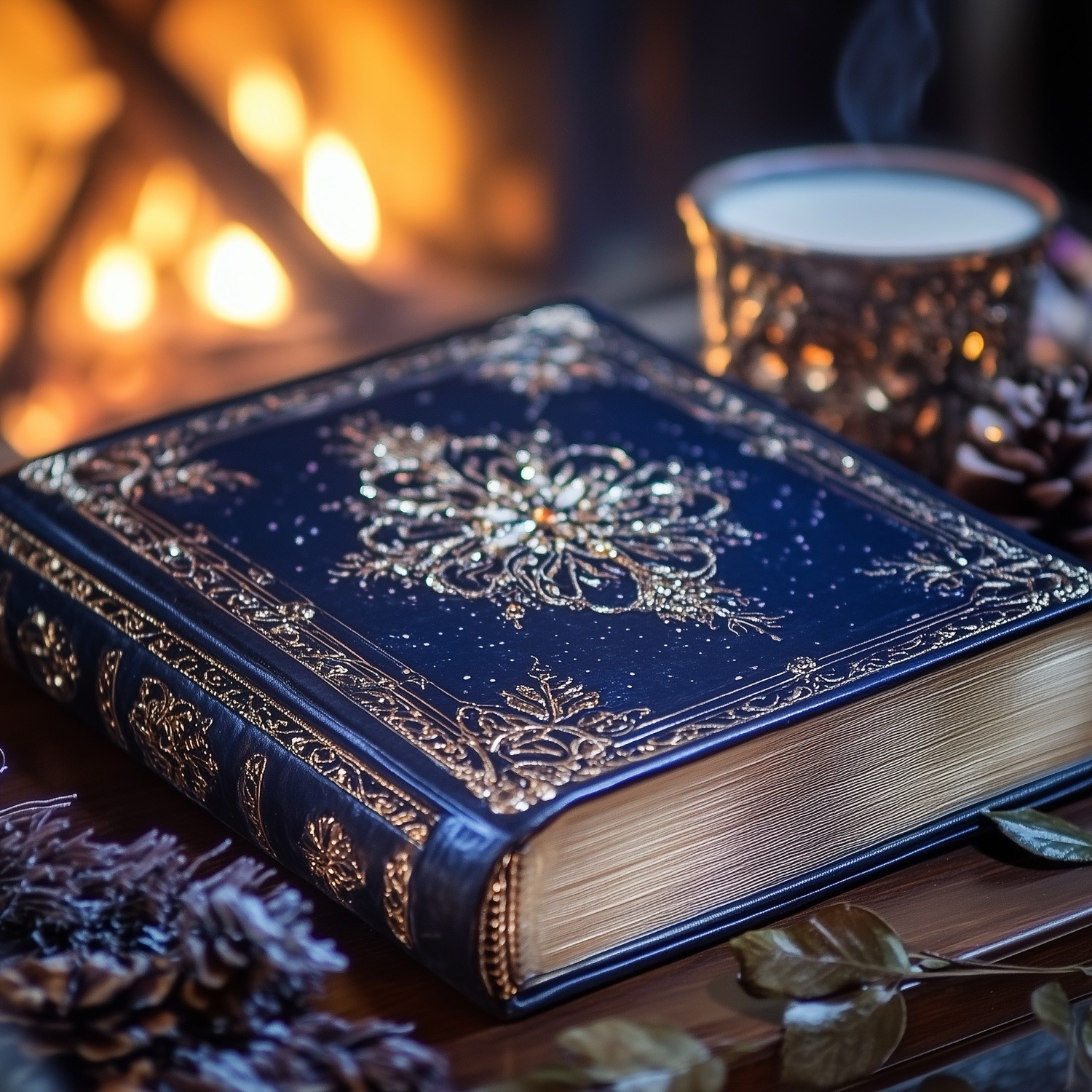
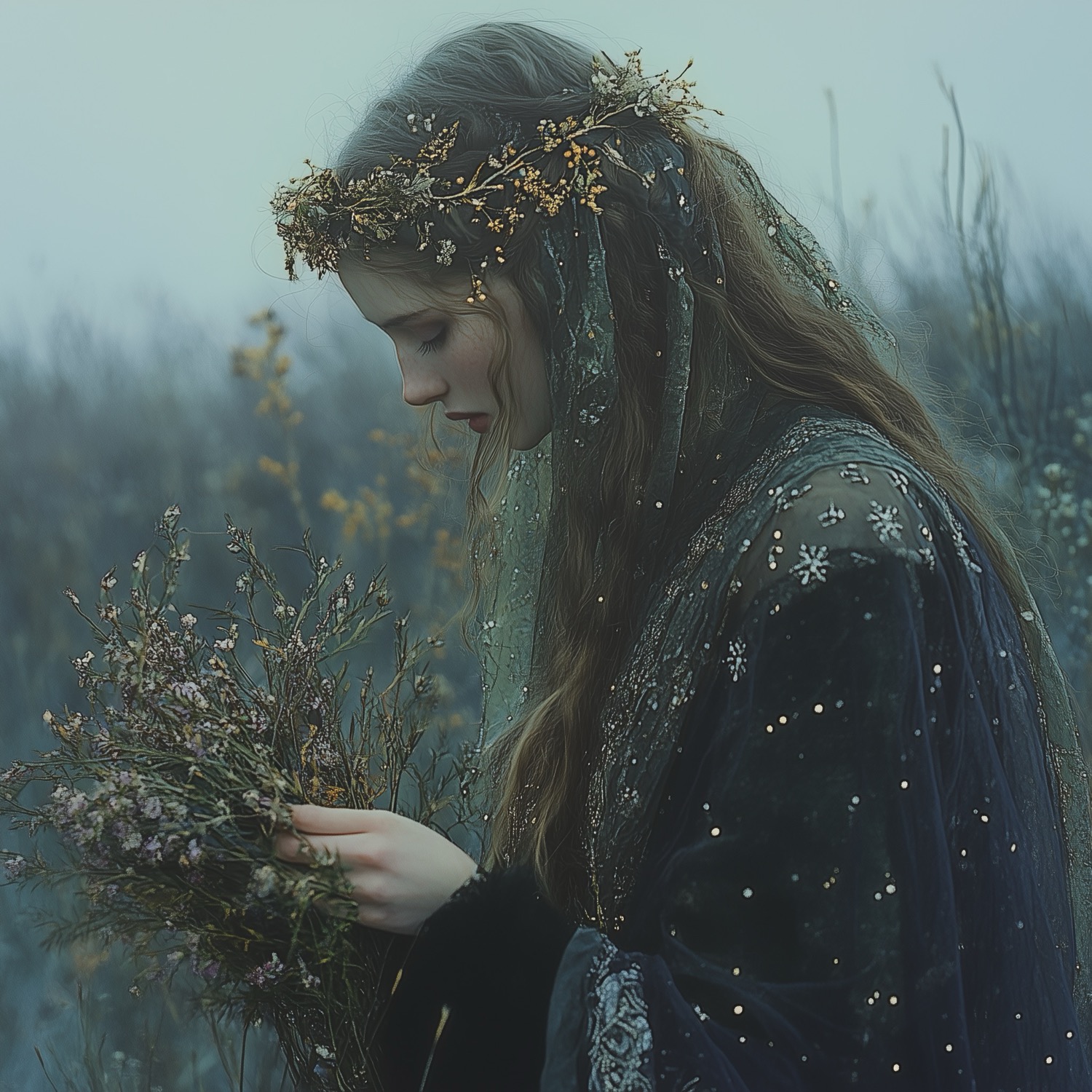
Demeter, not knowing what had occurred, searched the world in vain for her missing daughter. In her grief, she left a barren world in her wake. Eventually, the sun god Helios took pity on her and informed her of Persephone's location. Demeter begged the gods to return her child, but they ignored her pleas. She responded by holing up in a temple dedicated to her daughter, leaving the world ravaged by drought until Zeus finally sent his messenger, Hermes, to ask that Hades return Persephone.
However, crafty Hades had figured out a workaround. Knowing that anyone who ate the food of the Underworld could never permanently leave it, he contrived for Persephone to eat pomegranate seeds, sealing her connection to him. Zeus, finding a compromise necessary, ordained that Persephone would spend part of the year in the Underworld with Hades and part of it above ground with Demeter. In this way, the story of Persephone came to represent the seasonal transitions with spring and abundance corresponding to her return to Demeter and wintry death and decay occurring when she descended back to the Underworld.
Persephone has inspired many artists from antiquity to the present. From depictions of her on Greek pottery, such as Persephone's Ascension Terracotta Bell-Krater circa 440 BCE, to the Victorian-era piece, The Return of Persephone by Frederic, Lord Leighton, to her modern appearances in movies, comic books, and even video games Persephone has sustained a long and powerful influence. Her potency likely stems from her disparate roles as a goddess of spring, grain, and agriculture, as well as the queen of the Underworld, making her a liminal figure linking life and death and serving as a reminder of transformation and renewal.
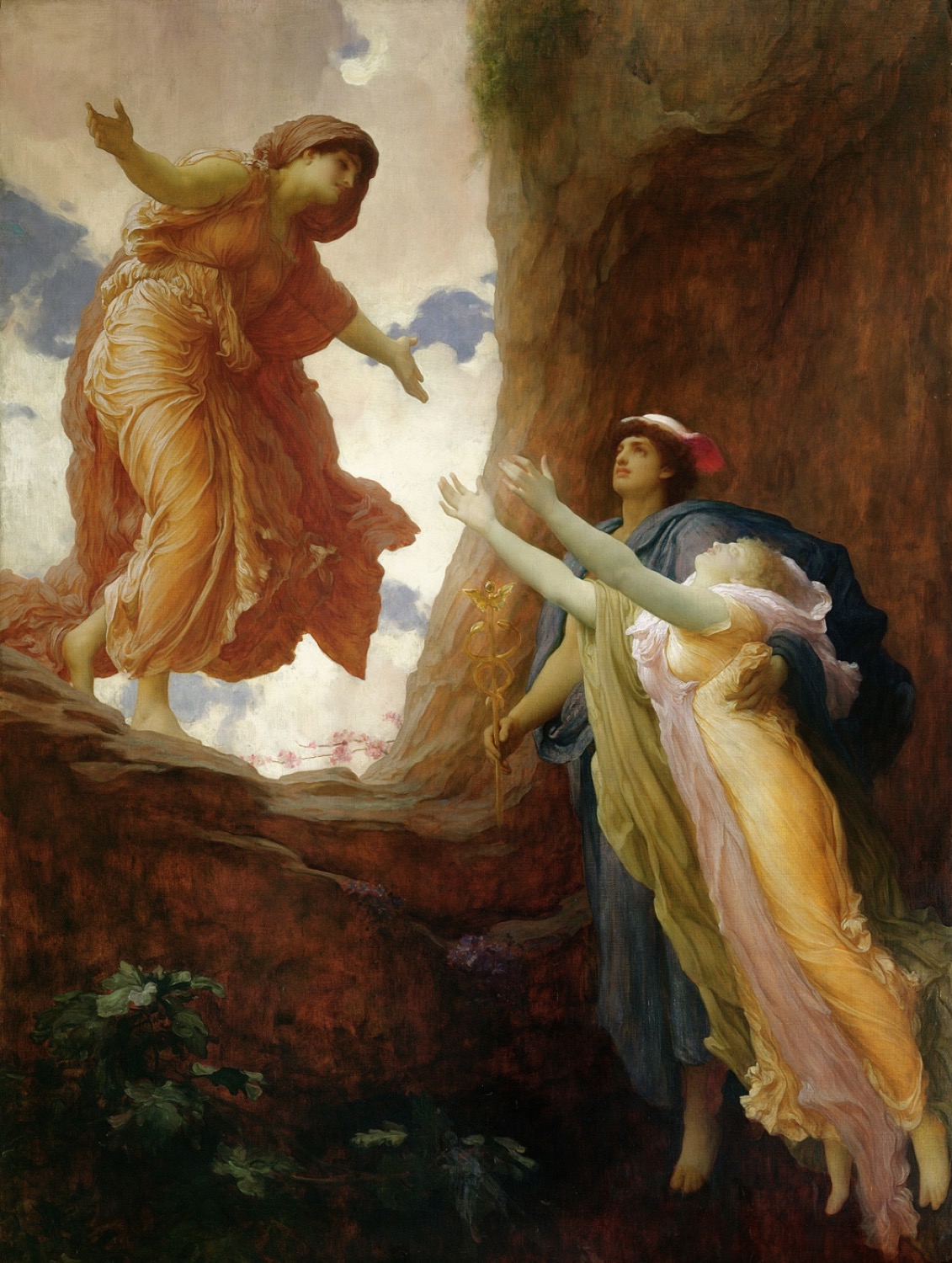
The Return of Persephone by Frederic
By Lord Leighton, 1891
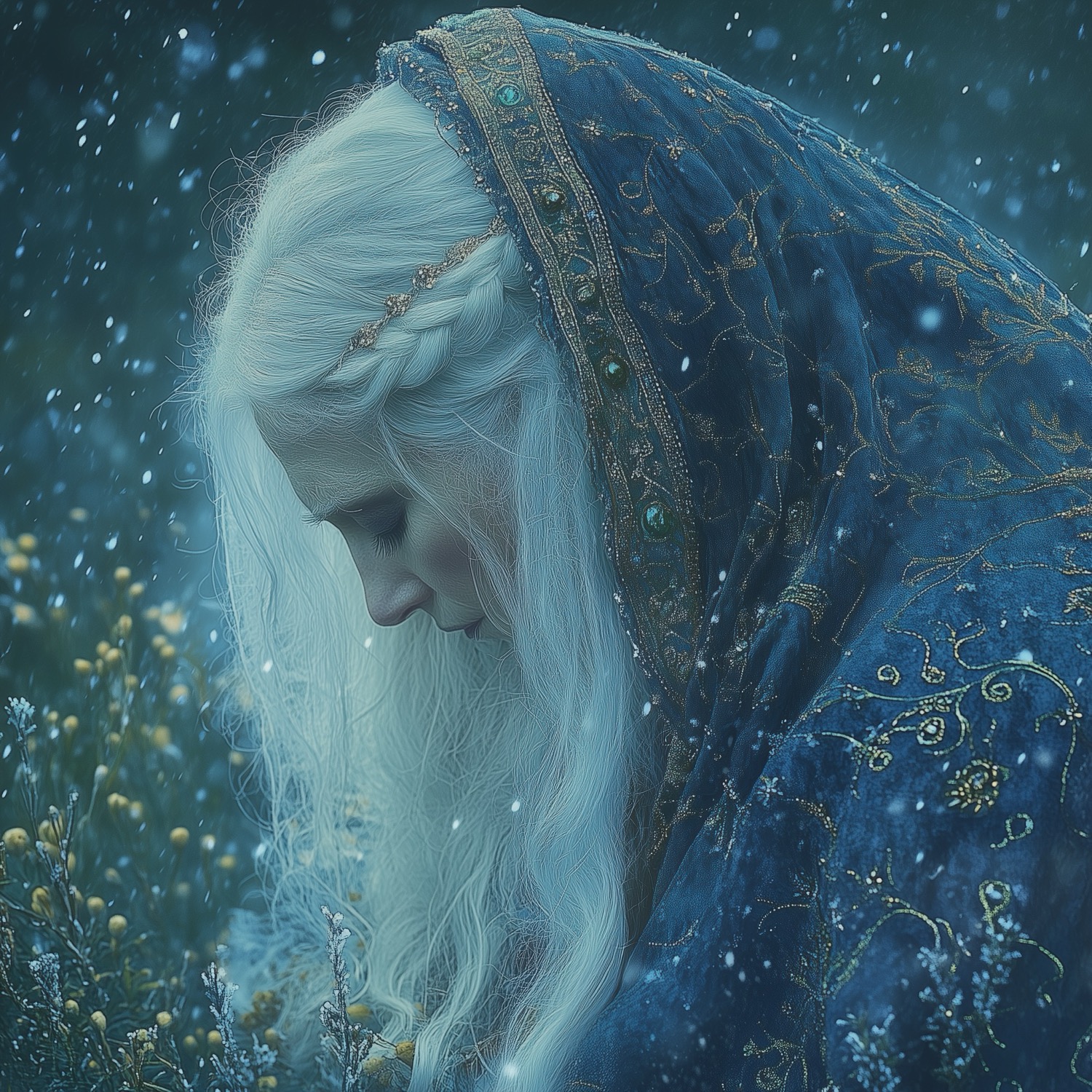
Perhaps lesser known, but no less compelling, is the Celtic goddess Cailleach. Revered on one hand as the mother of all, she is also referred to as a fearsome crone with one eye, blue skin, white hair, and copper teeth; her image alone is a force to be reckoned with. The Cailleach, translated as the veiled one, is also known as the Queen of Winter and the Hag of Beara. She is storied to have made the mountains of Scotland and Ireland from her bones, carving them out with her hammer (or sometimes a staff). Though she is considered a creator deity, she is also widely known for her affiliation with horned beasts, burial chambers, changing seasons, and the power of nature.
The Cailleach is also associated with the recurring theme of the triple Goddess, which exists across cultures: the maiden, the mother, and the crone. As the maiden, she drinks from the well of youth, becoming her adversary Bridget or Bride, the Goddess of spring; as a mother, she gives birth to the landscape shaping the world of men; as a crone, she unleashes fearsome winter, causing the world to cower into dormancy, awaiting spring and renewal.
Said to reign from Samhain on October 31st to Beltane on May 1st, the Cailleach represents the seasonal cycles as well as the stages of womanhood. In one piece of forecasting lore, marked by the celebration of Imbolc on February 1st, if the day is clear, the Cailleach is out gathering wood for the continuation of winter. However, if it's overcast, she is sleeping in, and spring will arrive soon. The stories of the Cailleach are varied but invariably rich, reflecting the dynamic nature of this Goddess who, through the ability to change and endure, holds life and death in the balance.
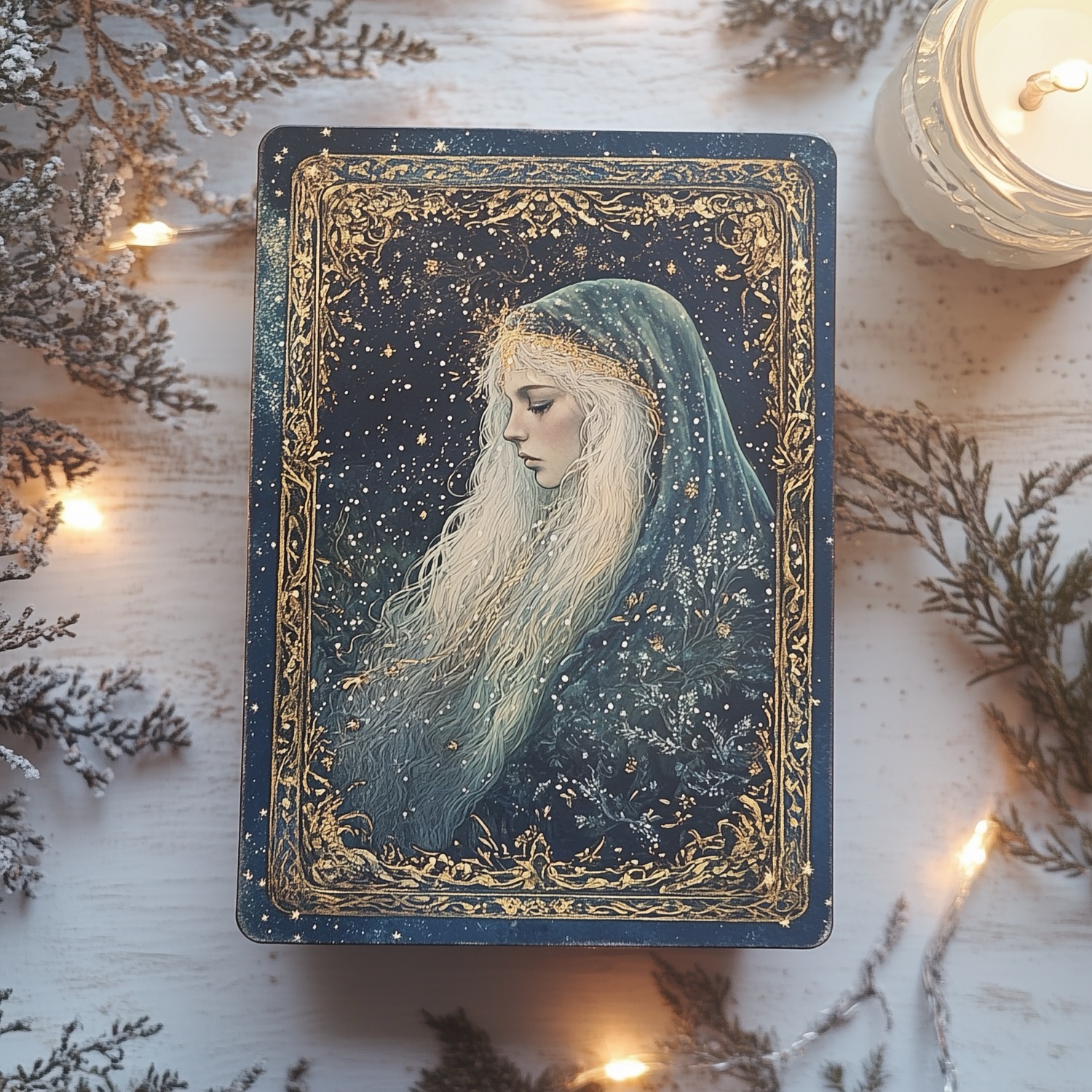
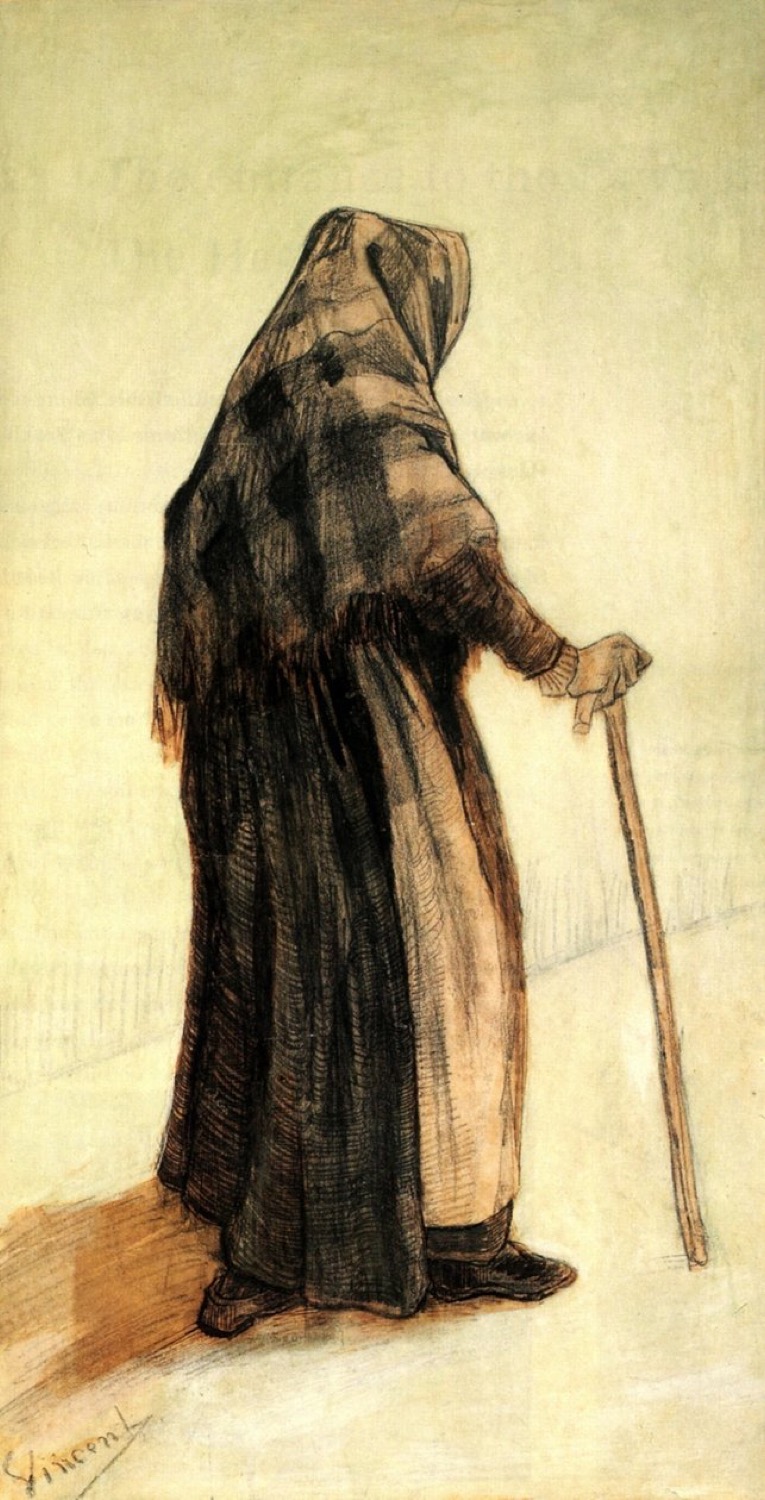
By Van Gogh, 1882
Myths have lasting appeal because they tap into the layers of meaning that populate our interior lives. They remind us that sometimes we need to see with eyes other than the ones in our heads and that, at moments, our motivations stem from profound stirrings of the soul. Winter conjures thoughts like these, and the goddesses Persephone and Cailleach help us interpret their deeper meanings and translate them into our creative process.
These goddesses remind us of the worlds we straddle between spring and winter, conscious and unconscious, youth and old age, dormancy and action. They show pathways to navigate challenges and change that can lead to renewal and expansion. They highlight how pruning and frost stimulate growth by sending energy inward biding time for the right moment to bloom. In this way, they serve as guides leading us on our creative journey through winter's tale.
The daylight hours are brief, the world has largely gone dormant, and the chill air drives us out of the elements seeking shelter indoors. The hibernal feelings that abound can leave us wondering if our creative faculties have likewise fallen into torpor. However, this need not be the case.
Winter beckons us to venture inward, taking advantage of the enhanced stillness to hone the skills needed to commence our internal creative journey. One way to cultivate this process is through the lens of myth, looking to characters such as Persephone and the Cailleach, who personify qualities of imagination, perseverance, and transformation. Join me in exploring how archetypal figures can serve as winter muses fanning our creative flames.


The myths of Persephone and the Cailleach share the commonality of splitting time between vastly different roles. For Persephone, part of the year, she is above ground with her mother, making the world bloom and bear fruit, and the other half of the year, she is Queen of the Underworld, living amongst shades.
For the Cailleach, in winter, she is active, violent even, scouring the world with snow, rain, and wind, and in summer, she is either turned to stone, asleep, or wandering the earth restored to her youth by magical waters.
For both goddesses, there is an active and dormant time, and each period feeds off the other. The balance is struck in opposites, and they lean into the qualities of each era and, through acceptance of their different roles, derive empowerment from both. This acceptance is not a resignation but a source of strength, turning the period of dormancy into an opportunity to gather energy and potentiate the growth to come.
In our artistic process, we can borrow from this pattern by initiating cycles of rest and inspiration. For example, we might spend part of our time in quiet repose or meditation, reflecting on what creatively we want to allow to fade into the earth permanently and what we want to mulch, preparing to burst back into life at the proper time.
At other moments, we may wish to take a more active role, working on introspective art projects like daily sketches that express the feelings that are coming up for us or help to depict the winter landscape's dominant colors, attributes, and textures. Or, perhaps journaling along seasonal themes exploring their impact on the psyche and what images they evoke.
Another source of inspiration in winter is experiencing the awe inspired by the potency of the natural world. The Cailleach embodies this with her fierce energy, whipping the world into submission with howling gales, tempestuous blizzards, and relentless deluges. Picture her riding past mounted on her giant wolf, leaving chaos in her wake, all living things shuddering in terror, and recognize the devastating power of nature’s destruction.
As artists, there are times when the energy of breaking down what we’ve previously clung to, leveling the edifices of our creative selves, can open the door to experimentation, capturing raw, elemental aspects of our natures through the revelation that creation is often nested in destruction. This process may help us channel the power of the Cailleach, inspiring strength, ferocity, and resilience as we reflect on the landscapes, symbology, and textures of the winter season.
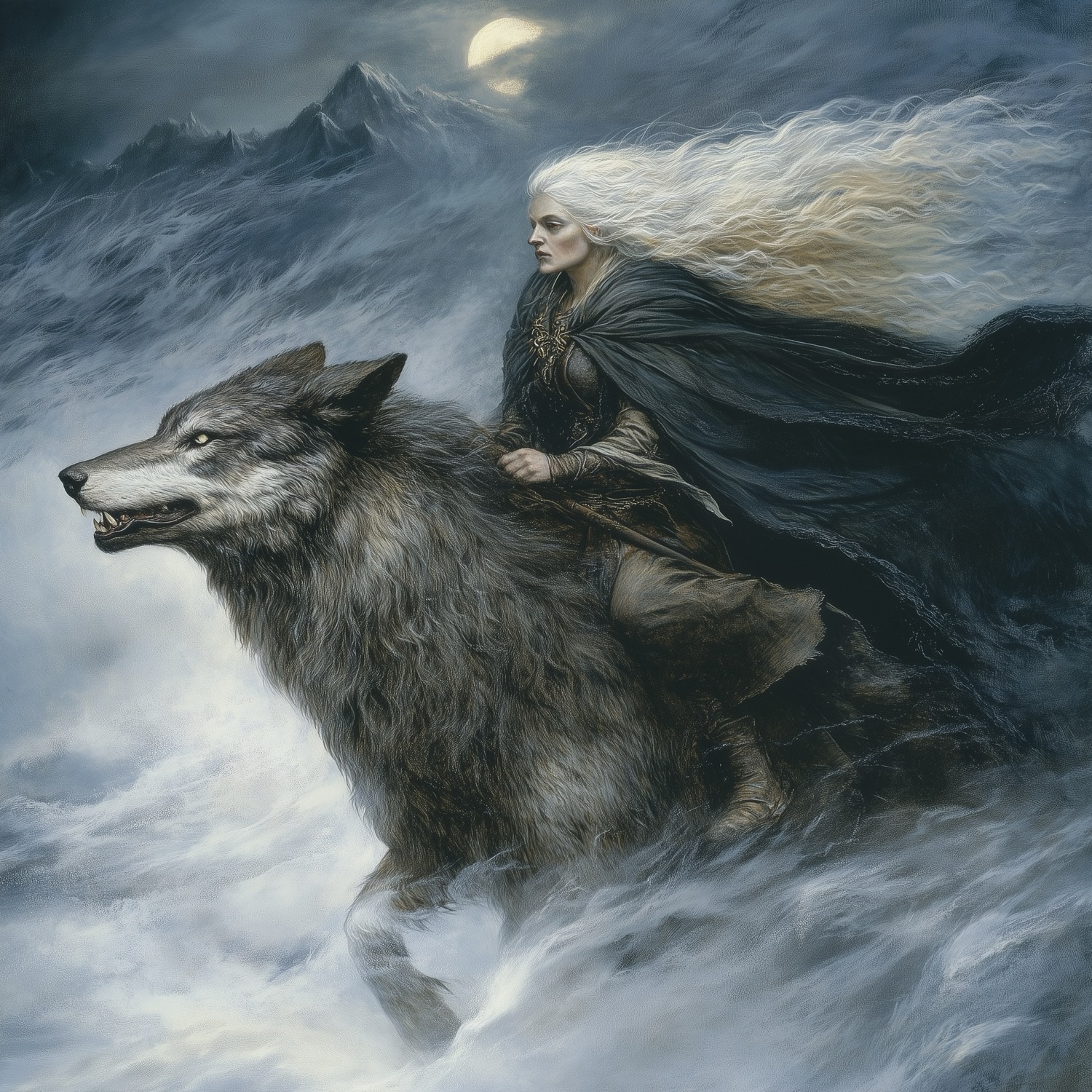

Sometimes, what we need creatively is to collapse into coziness, surrounding ourselves with soft textures, warm lighting, fragrant candles, gentle music, and a reflective mood. From this place of calm, ideas might pour forth that invoke the latent promise held in dormancy.
At other moments, what is required to stoke creativity is a bracing walk in the rain, facing the intensity of the elements head-on and, by so doing, lighting the fire within by embracing winter’s wildness. To determine what energy to tap that best accomplishes our goals, we can look to our collected stories and draw inspiration from myth. This connection to our shared cultural narratives can be a powerful source of imagination, guiding us to the energy we need to ignite our creativity.
Whether we call upon Persephone, tapping her ability to be the demure maiden bringing forth life or the Queen who masters darkness, creating a just balance in the Underworld, or the Cailleach with her ability to embody any of the stages of womanhood maiden, mother, or crone as gentle, nurturing or fierce as the situation requires, we have a trove of powerful visions to conjure from. If we do so wisely, we will traverse winter with a flame stoked to a roaring blaze that will light our creative path through the darkest days.

The dictionary definition of enchantment is:
Enchantment:
1. A feeling of great pleasure; delight.
2. The state of being under a magical spell; magic.
How Enchantment Relates to the Artist and Our Themes this month...
For us artists, *enchantment* can mean both the experience of wonder and delight in the creative process and the magic that art itself brings to viewers. When creating art inspired by themes of winter mythology, enchantment invites the artist to delve into a world of imagination, mystery, and hidden stories. Much like the feeling of being under a spell, the creative process can transport us into a realm where the ordinary becomes extraordinary.
In the context of our theme of winter mythology, enchantment is a perfect lens through which to explore the myths, goddesses, spirits, and other mystical beings that emerge in winter tales. These stories, like art, have the power to captivate us, to transport us to other worlds, and to reveal hidden truths. When inspired by winter mythology, we can bring this sense of wonder to life, crafting work that speaks to our inner desire for magic, mystery, and a deeper connection to the natural world.
Let’s tap into our creative intuition and do some self-reflective work inspired by our theme. Below you will see our month’s Oracle/Tarot card spread. But fear not, if you are not one drawn to using oracle or tarot cards, no worries, just use the accompanying reflective questions as writing prompts for your journals!
Here’s a three-card oracle card spread designed to tap into your creative intuition and our themes. This spread and its journaling prompts encourage reflection on the artist’s inner wisdom, the magic of inspiration, and the journey of trusting intuition in the creative process.
Three-Card Spread: "Winter’s Whisper"
Card 1: "The Inner Spark" (What stirs your creativity now)
Purpose: This card reveals what currently inspires you or where your creative energy is drawn. It represents the initial spark that stirs within, a whisper of inspiration waiting to be brought to life.
Reflection Prompt: What creative idea or theme is calling to me right now? How does this inspiration connect to my own inner magic or intuition?
Card 2: "The Enchanted Path" (How to trust and follow your intuition)
Purpose: This card guides you in trusting your creative intuition, even if the direction is unclear. It encourages you to embrace the mystery and let your inner voice lead.
Reflection Prompt: How can I honor my creative intuition, even when the path is uncertain? What steps can I take to lean into the unknown and trust my instincts in the creative process?
Card 3: "The Manifestation" (What you are bringing to life)
Purpose: This card reveals what you are in the process of creating or manifesting, representing the magic you’re bringing into the world. It speaks to the final form your inspiration may take, encouraging you to visualize it with confidence.
Reflection Prompt: What is the vision I am bringing to life through my creativity?
This spread and the journaling prompts invite you to explore the magic of inspiration and trust in your creative journey. As you work through the prompts, allow yourself to sit in stillness, connect with your intuition, and listen to the “whispers” that emerge from your inner world. This process can help you feel more attuned to the enchantment of creativity and to the powerful stories you have within.=
Set the Mood:
Focus Your Intention:
Shuffle the Cards:
Draw the Cards:
Reflect on Each Card:
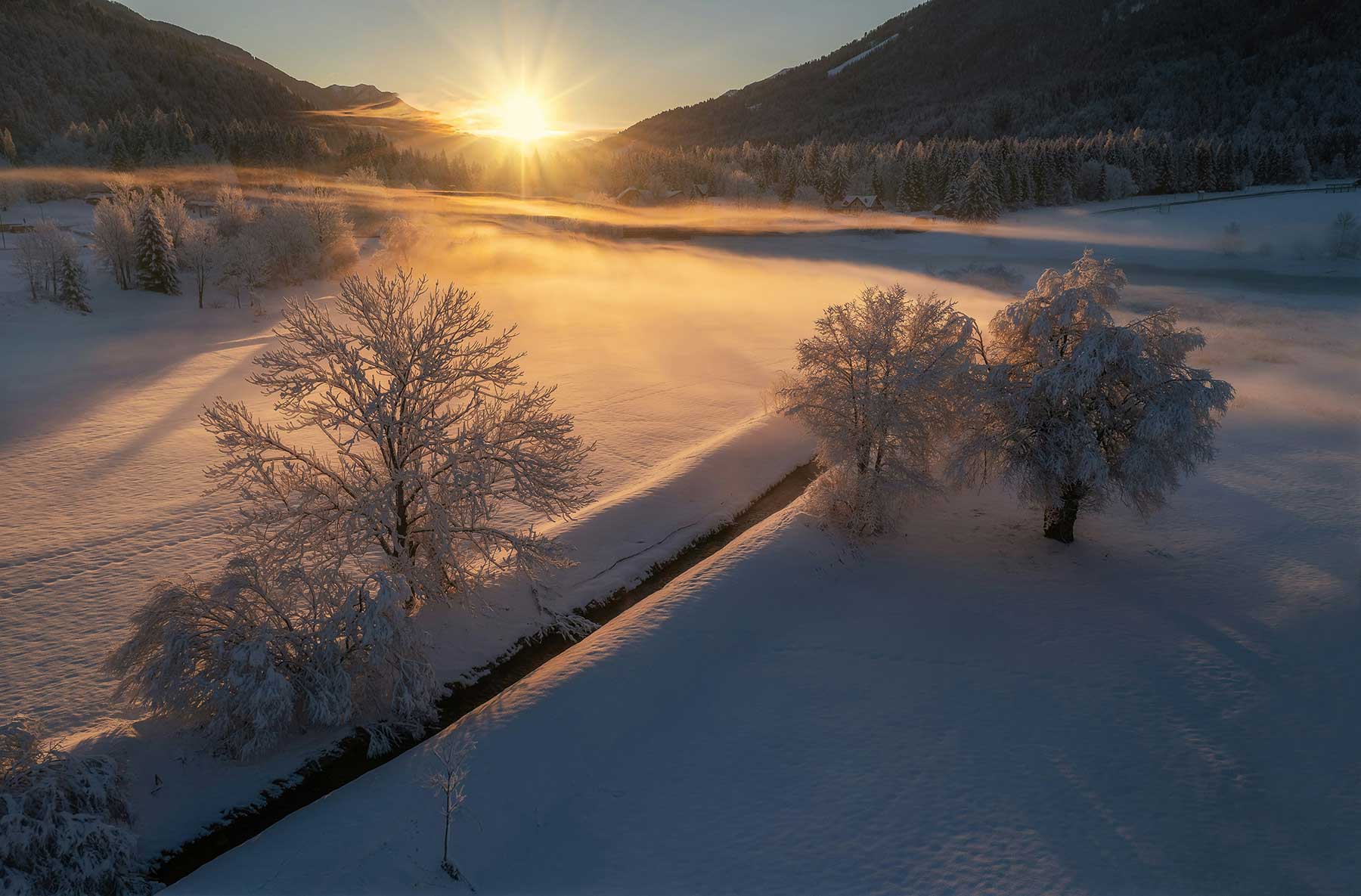
Treat yourself to this wonderful and powerful short (just 9 minutes) meditation from one of my favorite meditation creators - Rachel Hillary
Here’s a little more information from Rachel…
This is a short but potent meditation I put together at this time for anyone wishing to take part. Together, we reconnect with the light and bring it in, in order to shine it out. Simple but powerful. Just close your eyes and listen. You can use this daily or more often.]
lots of love,
Rachel
Each month we will have a positive affirmation. I recommend you print out this affirmation and put it in your sketchbook or somewhere in your studio. Recite the affirmation out loud each time you show up to create. Saying words aloud is powerful and can begin to re-write some of our own limiting beliefs or calm our fears. Try it now…
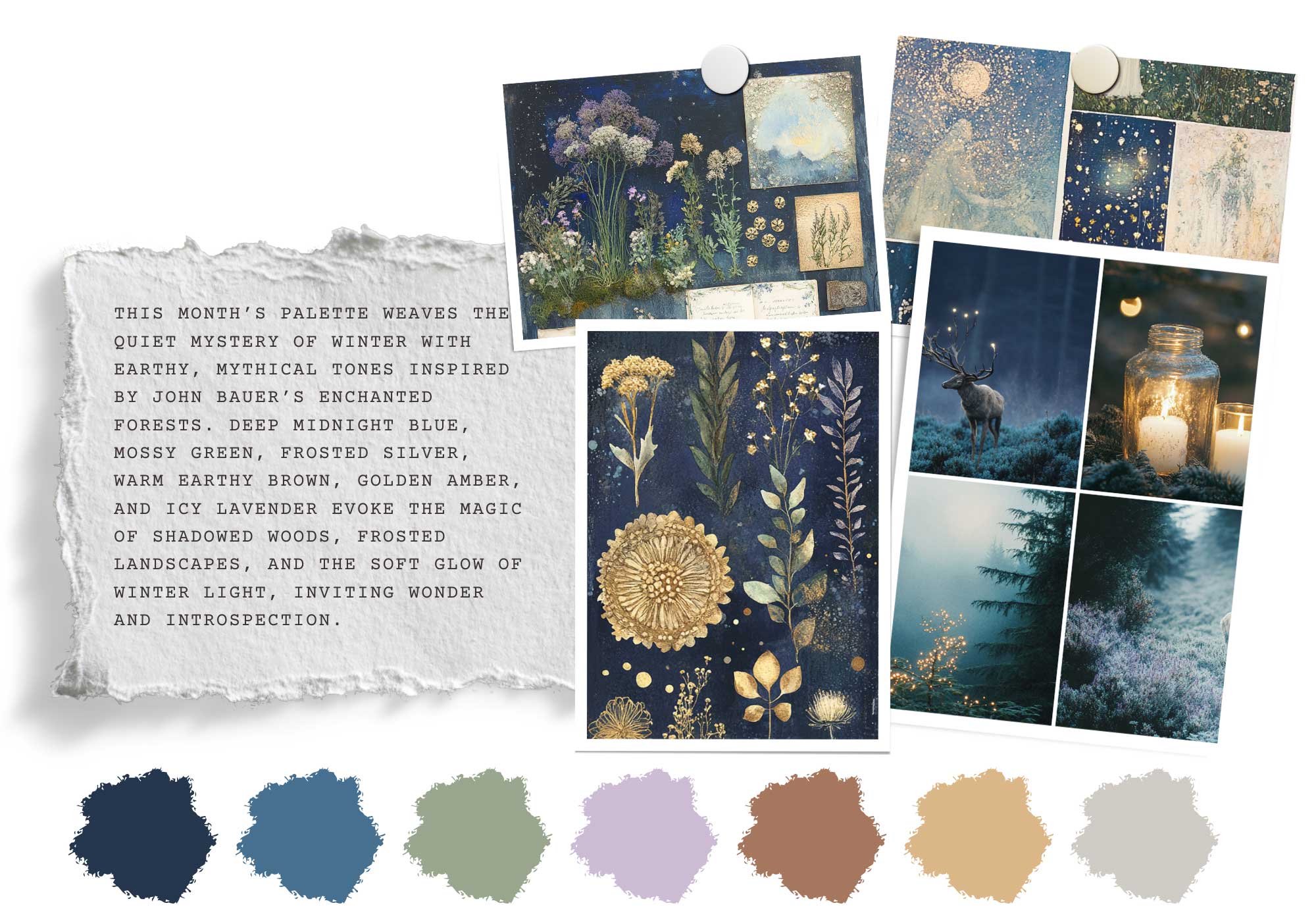
For a color palette inspired by John Bauer and the themes of winter mythology and enchantment, we could draw from the mysterious, earthy tones and deep, moody hues often found in Bauer’s illustrations of Scandinavian folklore. Here’s a palette that captures the ethereal, magical feel of winter while reflecting the forested landscapes, mythical creatures, and mystical lighting in Bauer’s work:
"Enchanted Forest" Color Palette:
Deep Midnight Blue – Inspired by winter’s night sky and the quiet mystery of deep forests, this rich, dark blue serves as a grounding color for the palette, evoking a sense of depth and magic.
Mossy Green – This earthy green reflects the forests that frequently appear in Bauer’s illustrations, giving a connection to nature and grounding the palette in natural, mythical settings.
Frosted Silver or Pale Grey – A soft, cool tone that captures the winter frost, mist, and the gentle light of dawn or dusk. It adds a delicate, ethereal touch, balancing the darker tones.
Warm Earthy Brown – A natural brown with hints of warmth, evoking the trees, earth, and quiet stillness of the forest floor in winter. It brings warmth and connection to nature’s organic elements.
Golden Amber – Inspired by the warm glow of candlelight or the mythical light in Bauer’s works, this color symbolizes enchantment and wonder. It’s a pop of warmth against the cooler tones, capturing the magical glow often seen in his art.
Icy Lavender or Cool Purple – A subtle, mystical color that complements the cooler tones and adds an element of fantasy. This shade reflects the otherworldly beauty and magic often found in winter mythology.
John Albert Bauer (1882–1918) is one of Sweden’s most beloved illustrators, best known for his ethereal and mystical depictions of Nordic folklore. His work captures a world of ancient forests, mythical creatures, and enchanted landscapes, filled with both beauty and quiet mystery. Bauer’s art resonates with a timeless quality, evoking the quiet strength and magic of winter—a fitting inspiration for our theme this month.
Born in Jönköping, Sweden, Bauer grew up surrounded by Sweden’s natural landscapes, which would leave an indelible mark on his artistic style. His family later moved to Stockholm, where he studied at the Royal Swedish Academy of Fine Arts. Bauer’s career took off when he was commissioned to illustrate stories for *Bland Tomtar och Troll* (*Among Gnomes and Trolls*), an annual publication of Swedish folklore tales. Through these illustrations, Bauer created some of his most iconic work, crafting images that remain deeply rooted in Scandinavian culture to this day.
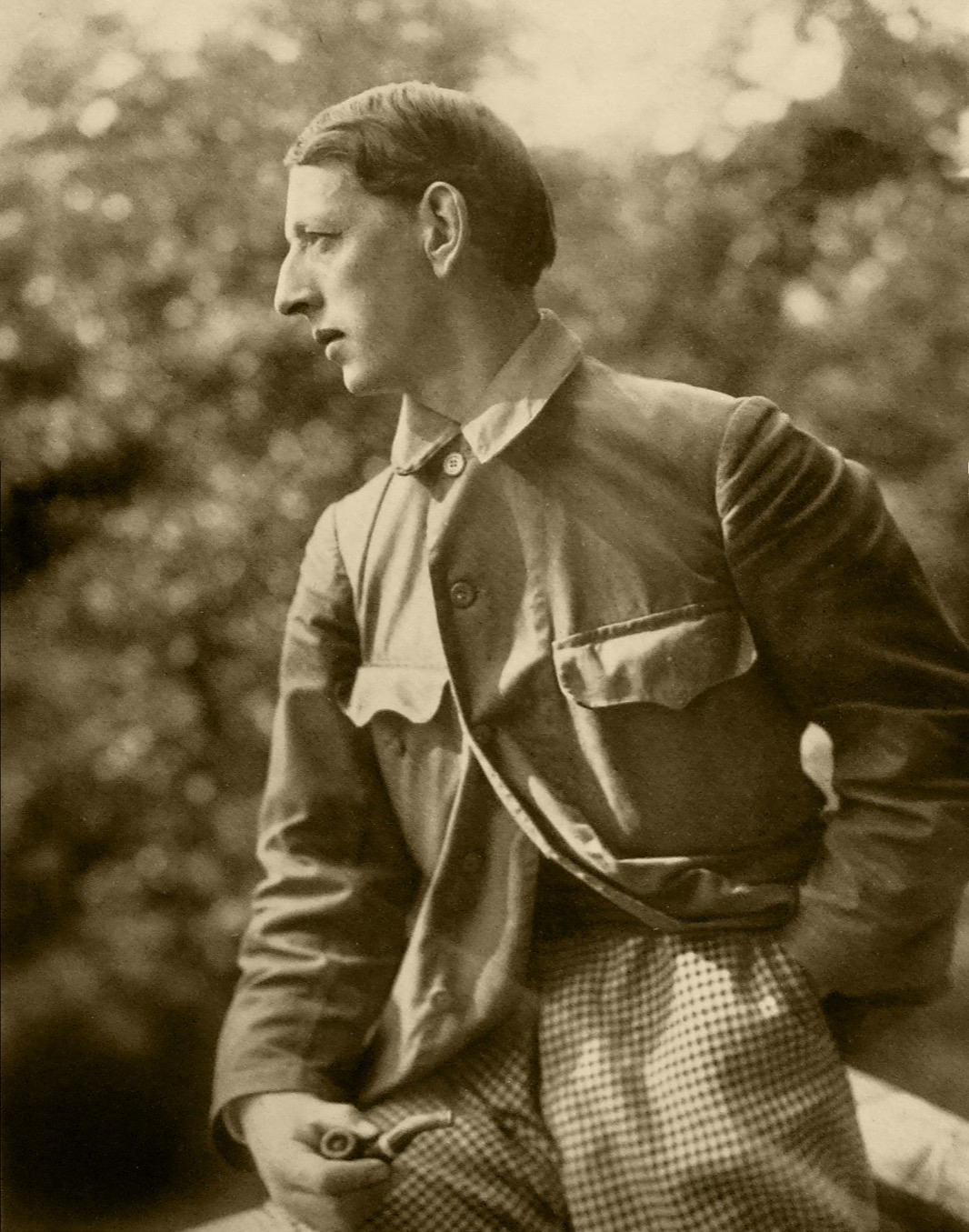
Born in Jönköping, Sweden, Bauer grew up surrounded by Sweden’s natural landscapes, which would leave an indelible mark on his artistic style. His family later moved to Stockholm, where he studied at the Royal Swedish Academy of Fine Arts. Bauer’s career took off when he was commissioned to illustrate stories for *Bland Tomtar och Troll* (*Among Gnomes and Trolls*), an annual publication of Swedish folklore tales. Through these illustrations, Bauer created some of his most iconic work, crafting images that remain deeply rooted in Scandinavian culture to this day.
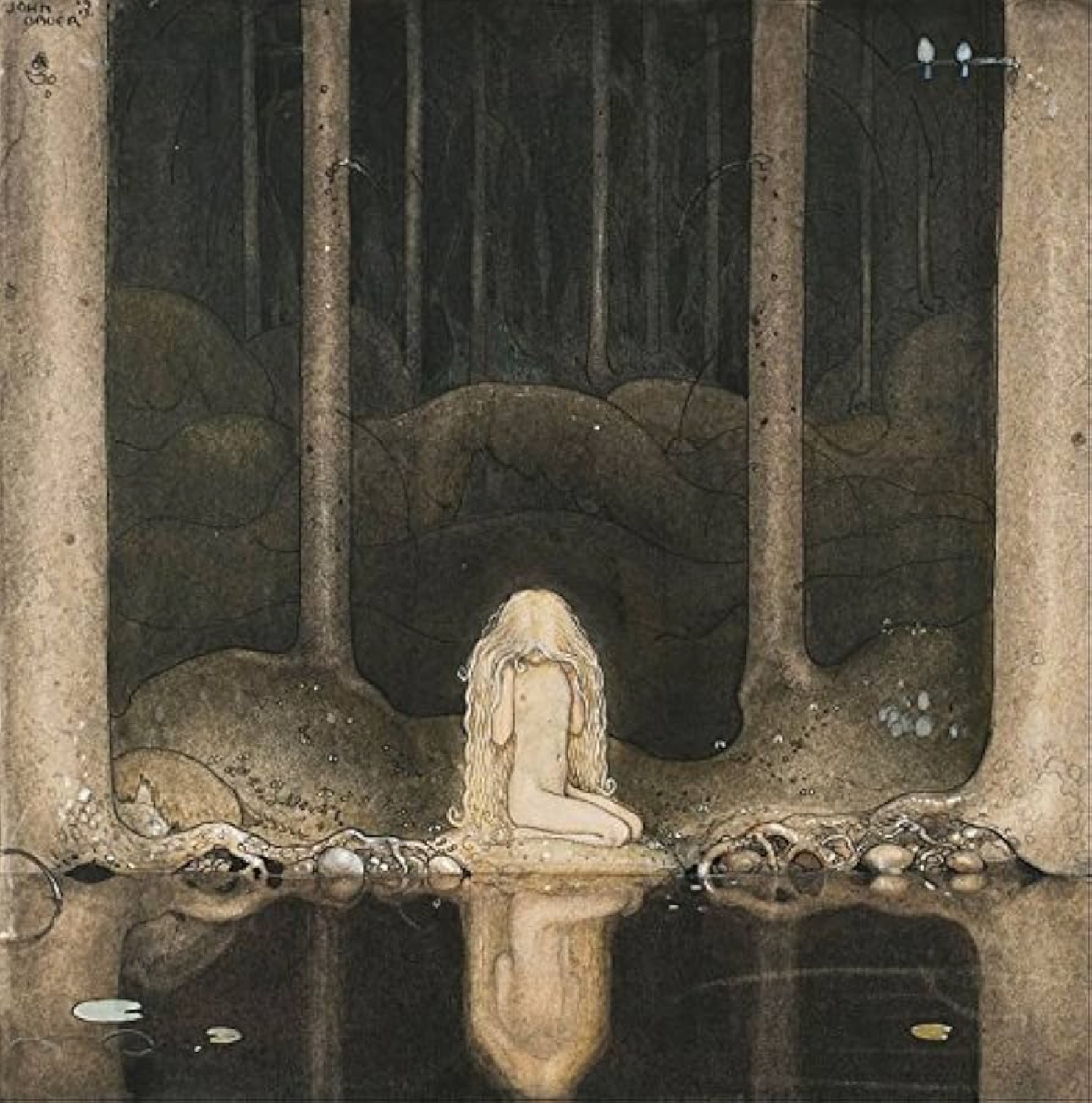
Princess Tuvstarr Gazing Down into the Dark Water
By John Bauer, 1913
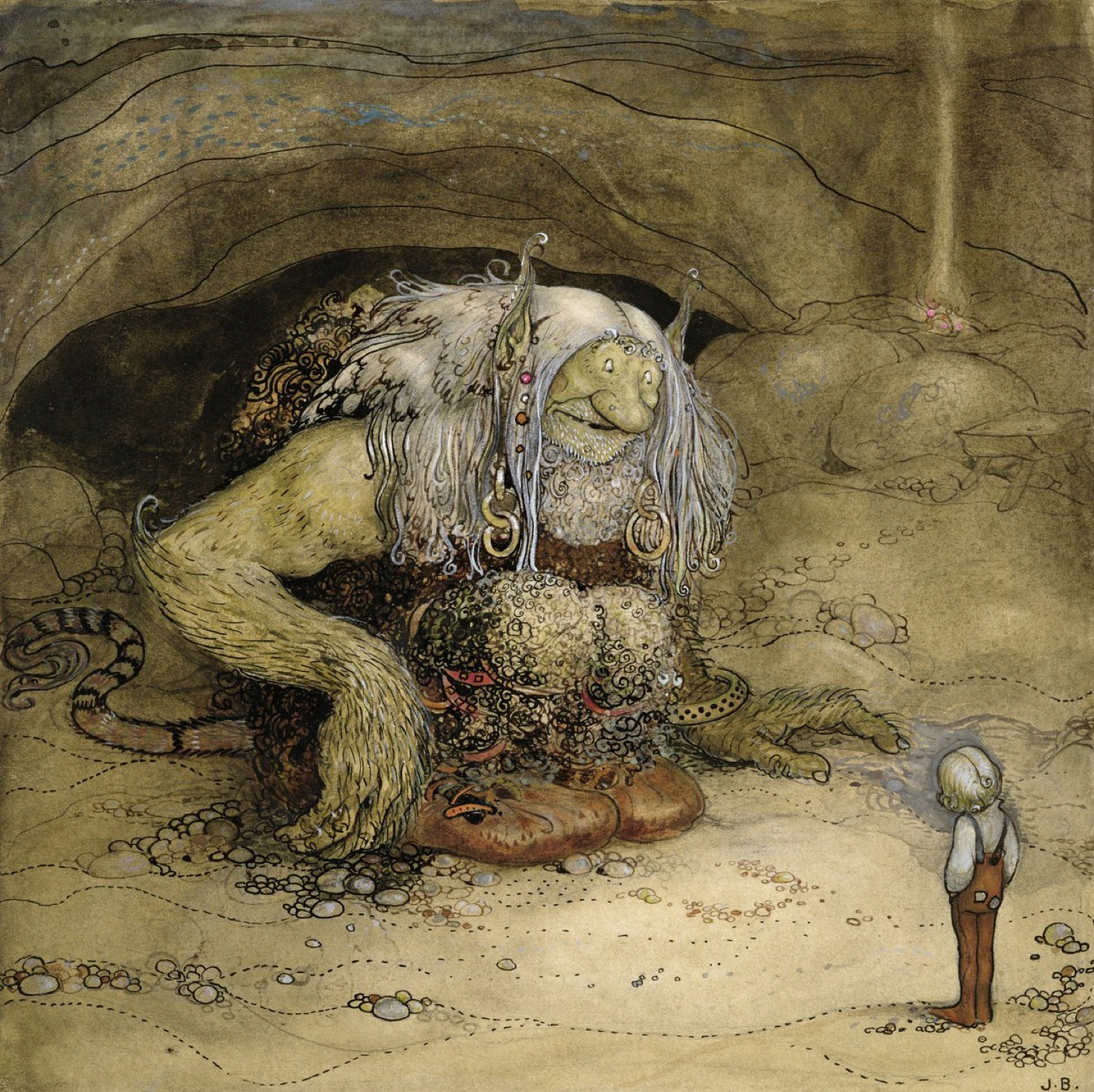
By John Bauer, 1913
Bauer’s illustrations often depict serene, snowy forests, mist-covered mountains, and characters on quiet journeys through shadowed woods. There is a sense of stillness in his work that mirrors winter’s quiet power—a time of reflection, retreat, and transformation. Bauer’s trolls and mythical creatures are not merely sinister beings; they are portrayed with depth and complexity, reminding us that even in the darkness of winter, there is magic and hidden life.
Bauer’s palette is rich in earthy browns, deep greens, and shadowy blues, reflecting the forested landscape of Scandinavia. His use of light—often in the form of a pale winter sun, moonlight, or glimmers through trees—adds an ethereal, almost mystical touch to his illustrations. These elements capture the feeling of a cold but beautiful world, a place of hidden magic waiting to be discovered. In his work, winter is both a setting and a character, full of subtle beauty and silent strength.
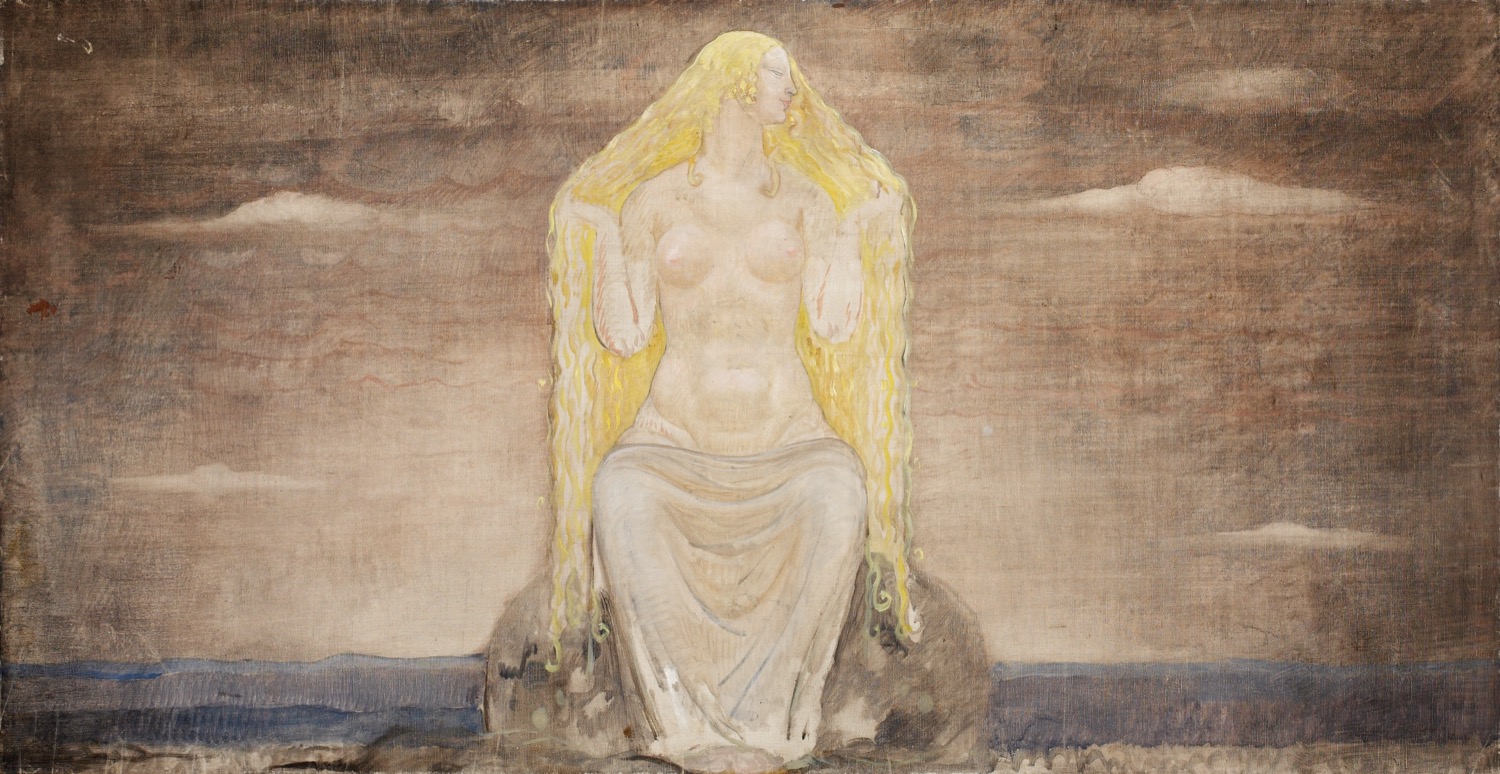
By John Bauer, 1905
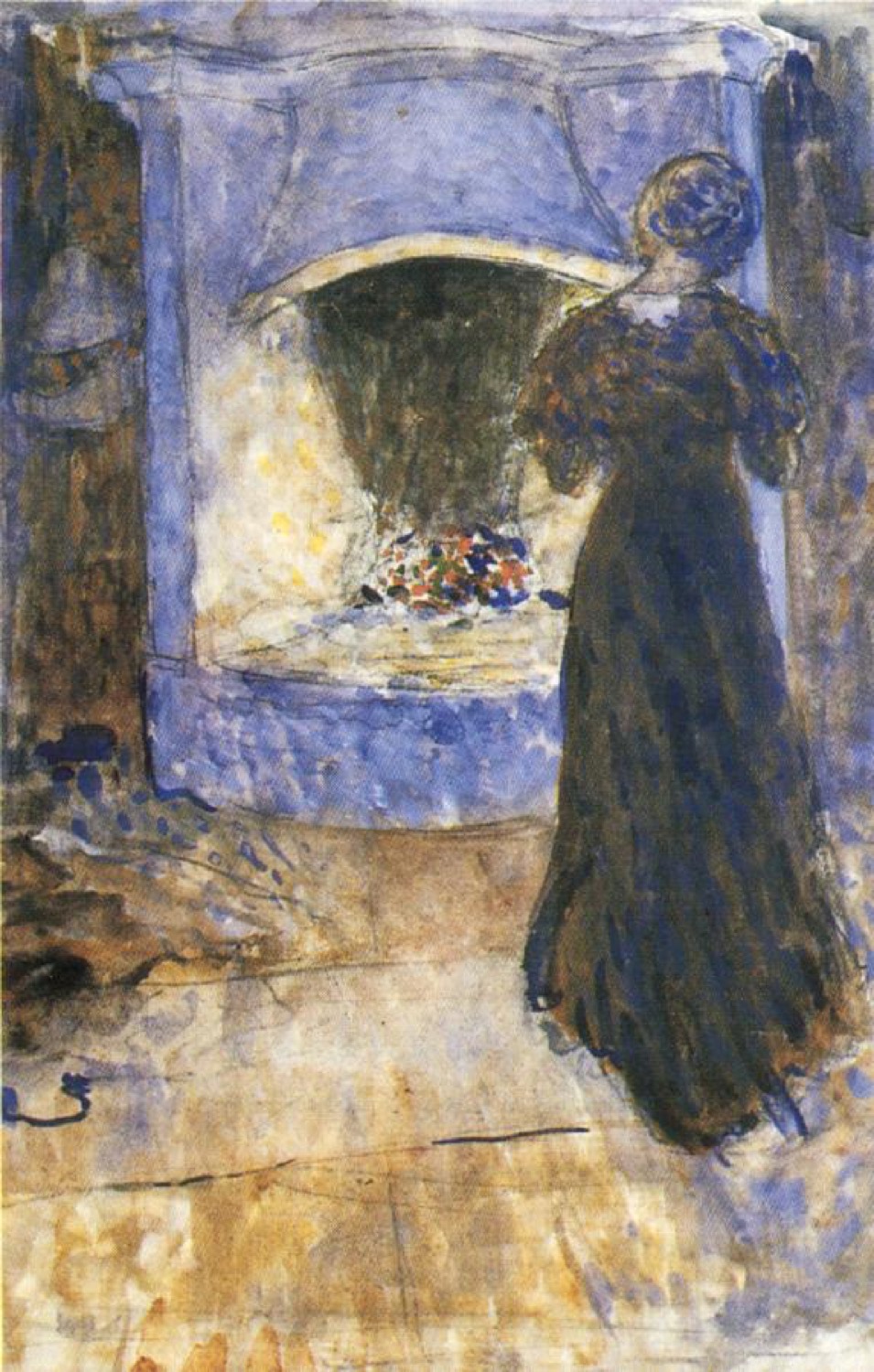
By John Bauer, 1907
Bauer’s work offers timeless inspiration for artists, especially in the themes of winter and mythology. Here are a few insights we can draw from his legacy:
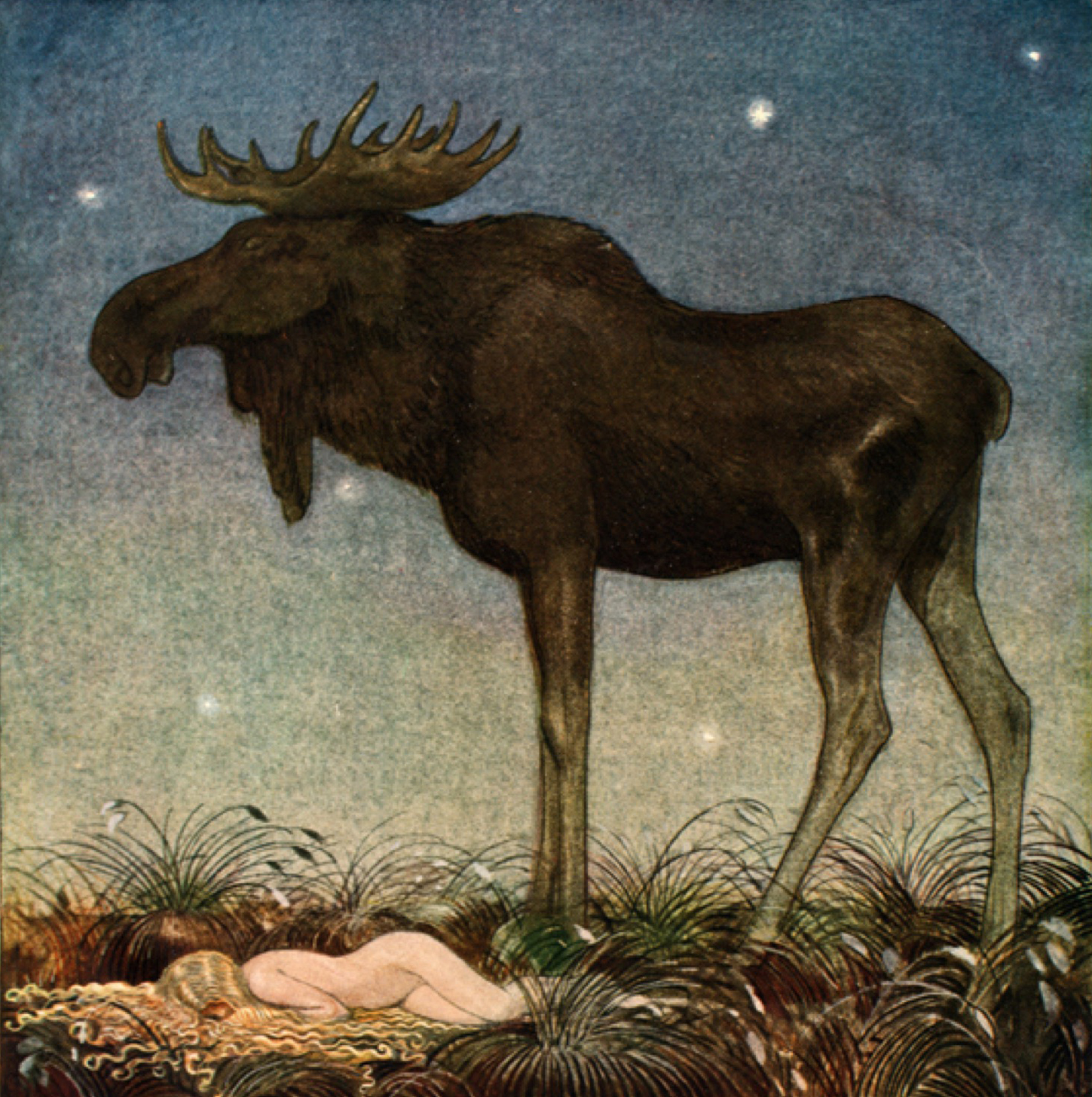
By John Bauer, 1913
Bauer’s art reminds us of the power that a deep connection to place can have on creative work. His illustrations are rooted in the landscapes of Sweden, and he draws on its forests, lakes, and snowy mountains to create a setting that feels both real and magical. For artists, connecting with the natural world around us can serve as a powerful wellspring of inspiration. Like Bauer, we can look to our own environments—whether urban, rural, or wild—and find endless sources of creativity.
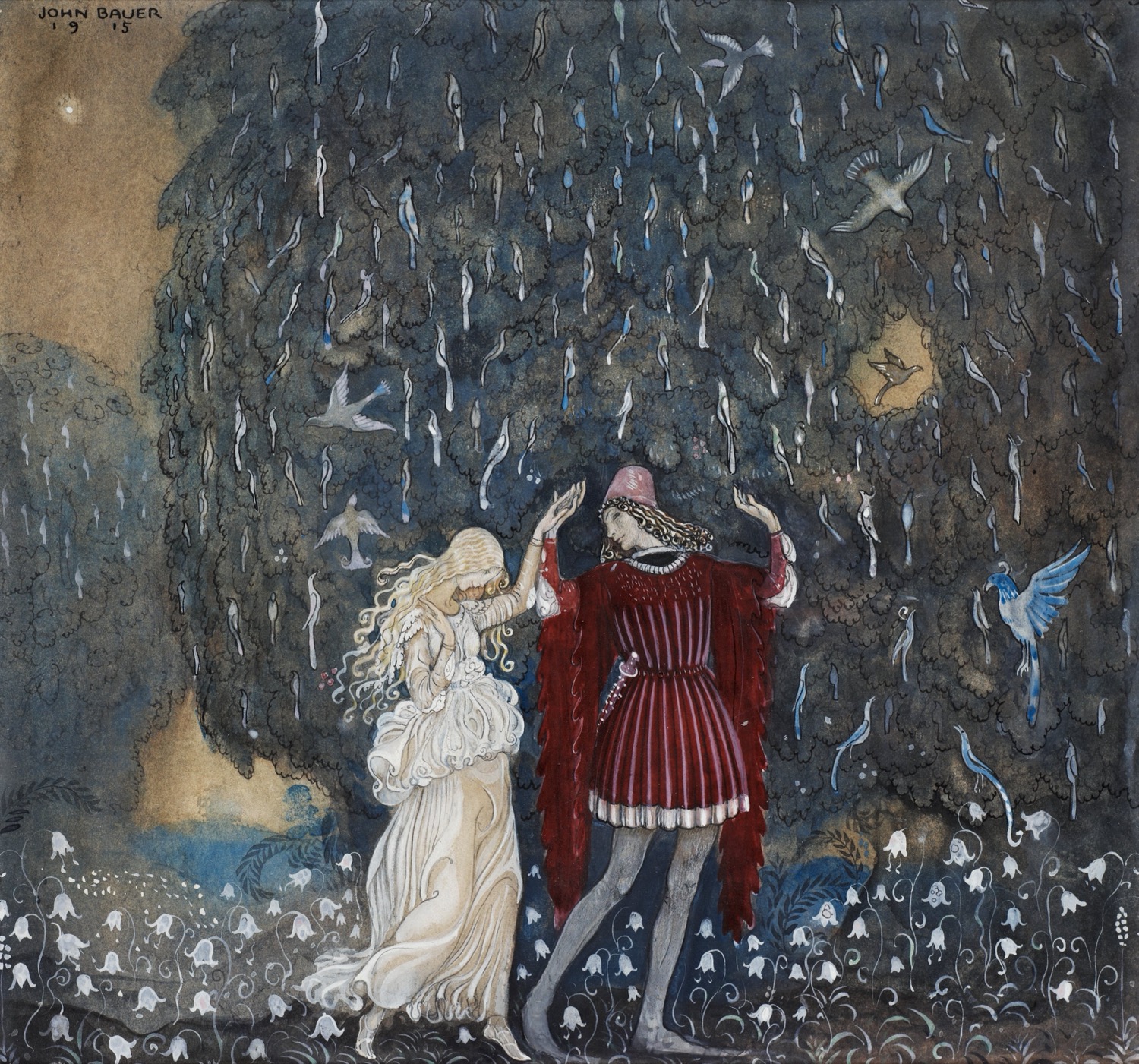
By John Bauer, 1915
Bauer’s mastery of light and shadow adds a sense of depth and wonder to his illustrations, inviting viewers to linger in the quiet spaces of his work. His style teaches us to embrace contrast in our own creations, using light to emphasize mystery and shadow to evoke depth. Winter provides a unique opportunity for artists to work with the subtle interplay of light and darkness, capturing the quiet beauty of the season.
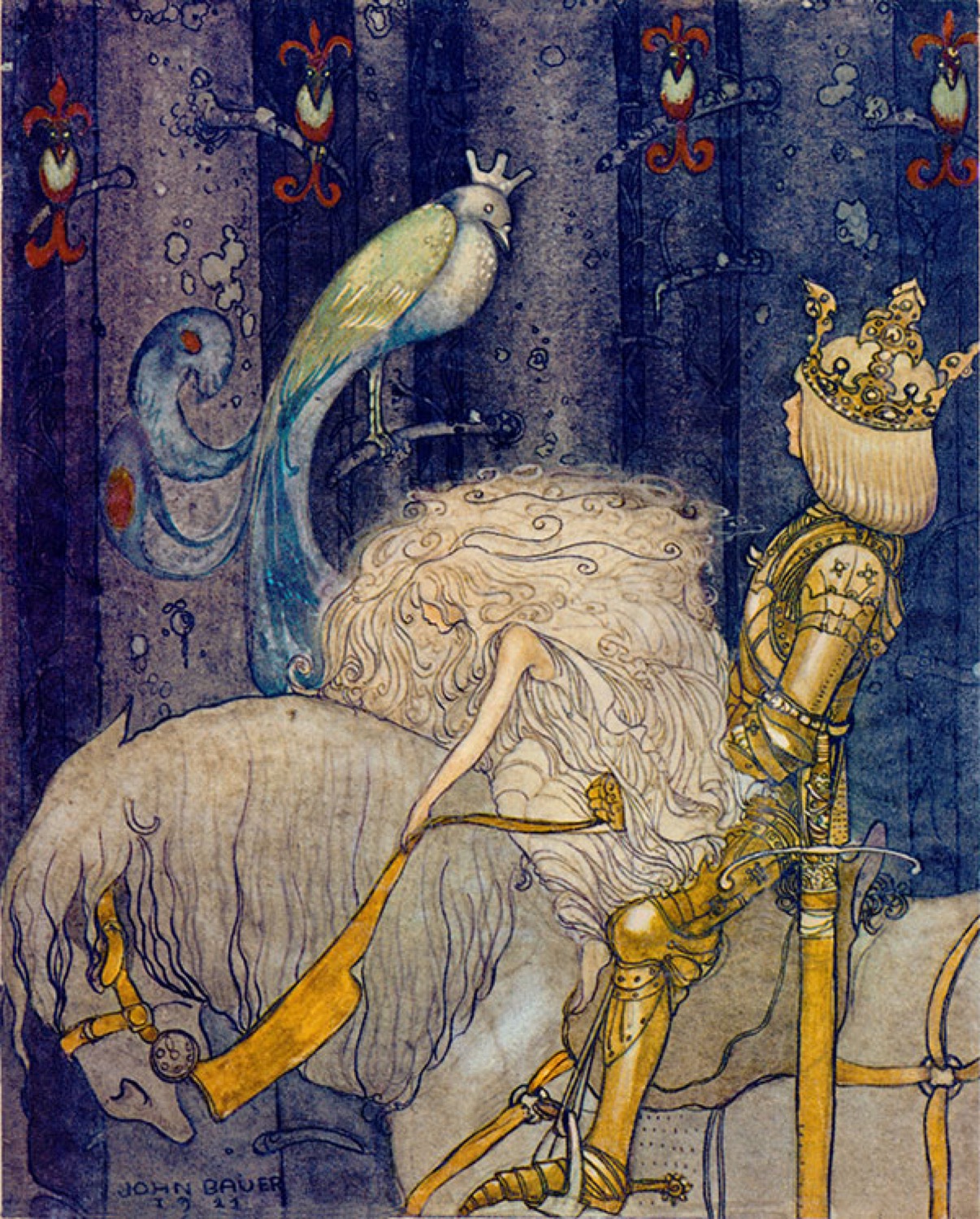
By John Bauer
Bauer’s compositions are simple yet full of intricate details, a balance that gives his work a timeless quality. His forests are dense with detail, and yet his scenes never feel overcrowded. As artists, we can learn from his approach by finding ways to let simplicity and detail coexist harmoniously. We might focus on adding meaningful details rather than overloading our work, allowing a sense of calm and stillness to shine through.
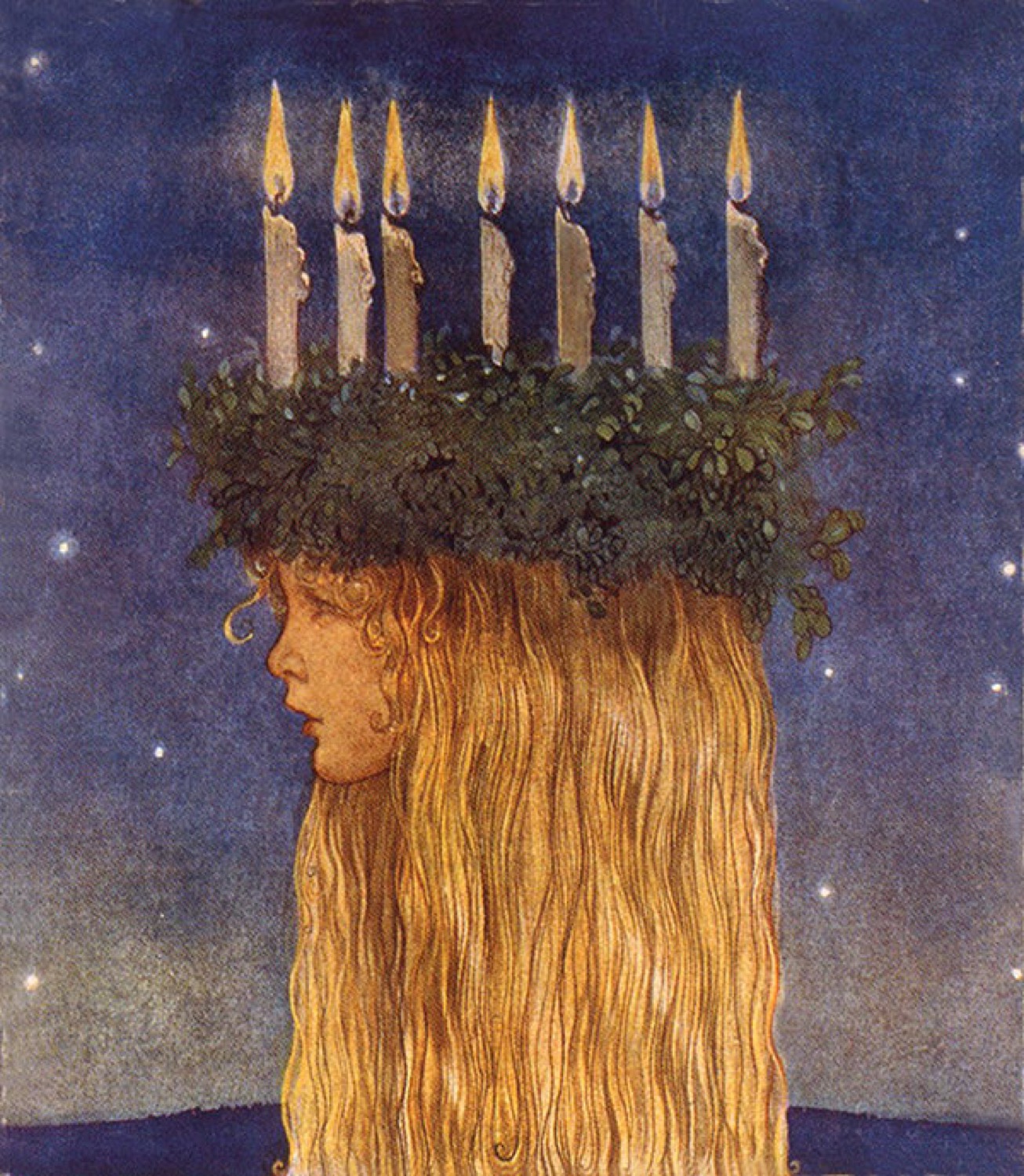
By John Bauer
Perhaps the most enchanting quality of Bauer’s work is its ability to transport viewers to a world of myth and legend. He draws on Swedish folklore but brings his own vision to these stories, adding depth and emotion to familiar tales. For artists, Bauer’s work is a reminder that myth and storytelling are powerful tools in creative work. By exploring stories—whether personal, cultural, or mythical—we can create art that resonates on a deeper level.
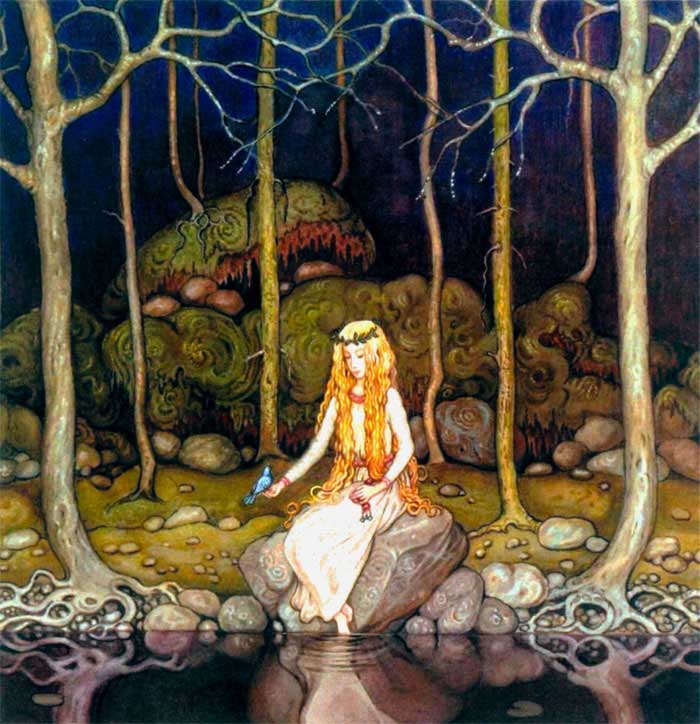
By John Bauer
Bauer’s work has a quiet, contemplative feel that reflects the solitude and mystery of winter. His pieces invite us to pause, reflect, and find beauty in the stillness. As artists, embracing the quiet moments of the creative process can be incredibly rewarding. Winter is a time to slow down, and Bauer’s work reminds us that there is value in taking this time to recharge, explore, and connect with our inner world.
Though Bauer’s life was tragically cut short—he passed away in a boat accident at the age of 36—his influence endures. Artists, especially those inspired by fantasy, folklore, and natural landscapes, continue to draw from his work. Bauer’s unique vision has inspired generations to explore the quiet magic of the natural world, finding beauty in its mysteries and subtle enchantments.
As we dive into this season of winter mythology, let Bauer’s art remind us of the hidden wonders in the world around us and within ourselves. Whether it’s the enchantment of a snow-covered landscape, the depth of shadowed forests, or the timeless power of myth, Bauer’s legacy is a testament to the beauty that comes from observing, dreaming, and bringing our unique visions to life. In our own work, may we find the courage to explore the depths of our imagination and create art that, like Bauer’s, transports and inspires.
Prompt: Create a winter forest scene inspired by John Bauer’s mystical landscapes. Use earthy tones like deep greens, frosty blues, and shadowy browns to capture a quiet, enchanted setting. Imagine a cloaked woman or mythical creature walking among the trees or peeking through the mist.
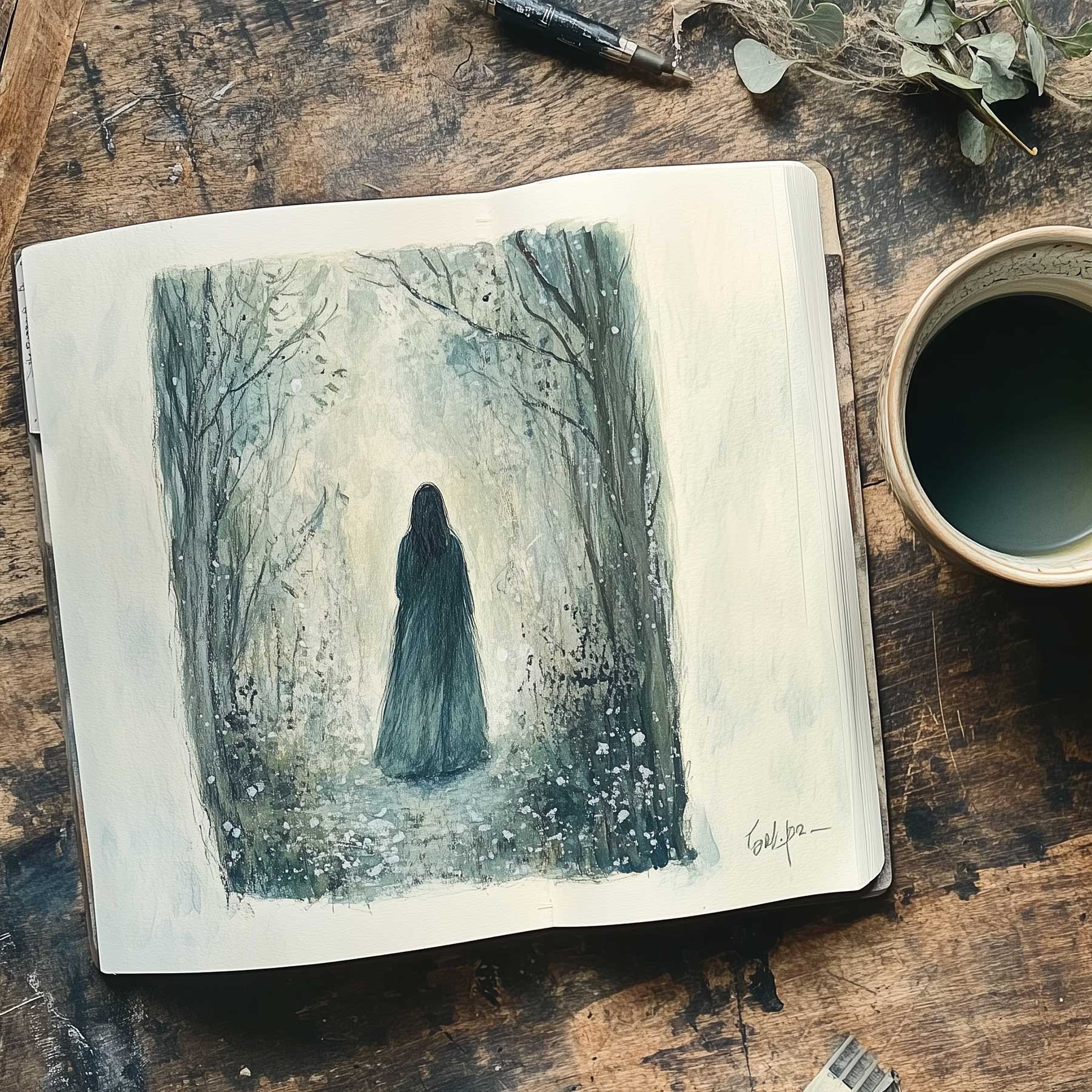
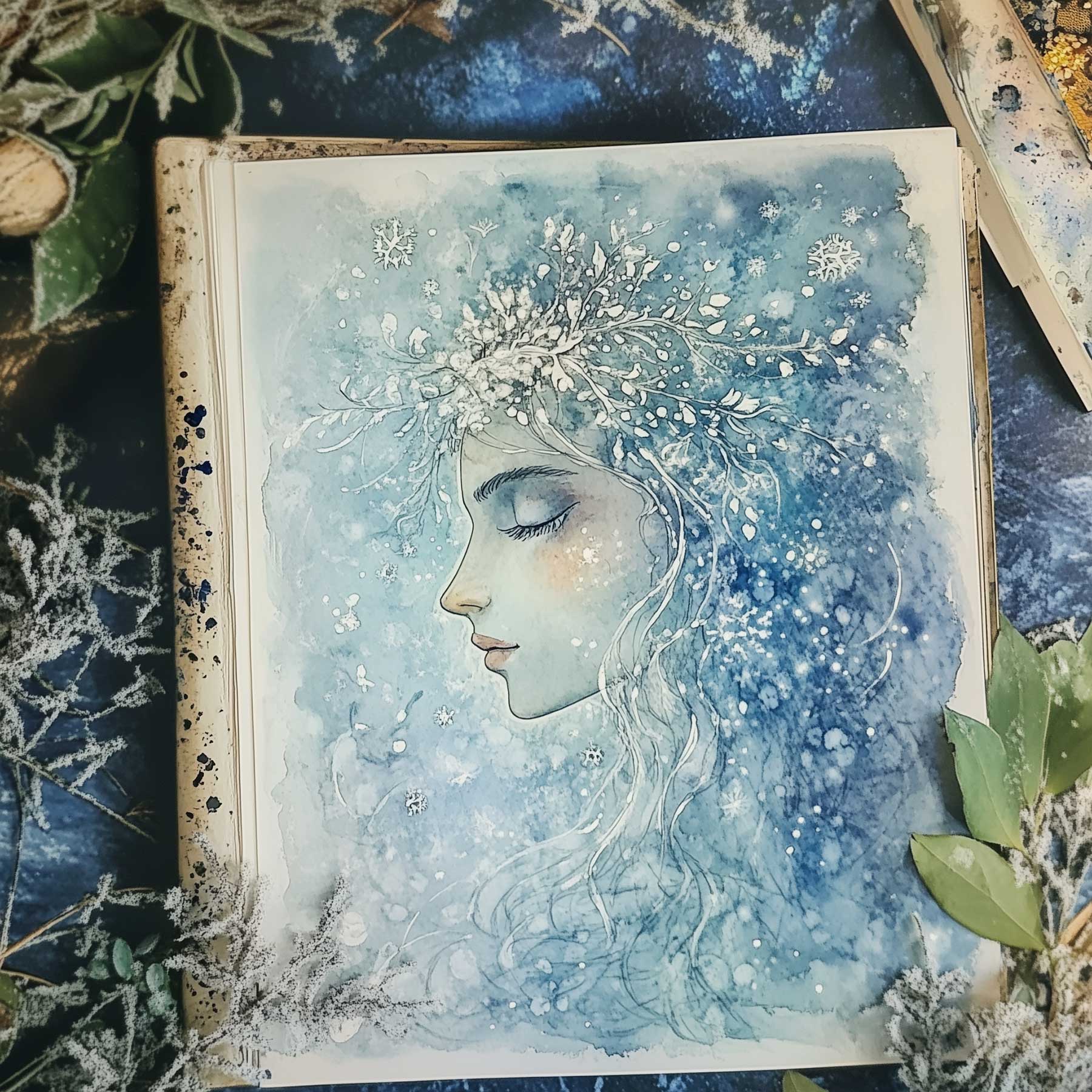
Prompt: Imagine and create a portrait of a Winter Goddess, embodying the mystical qualities of the season. Consider her connection to winter elements like snow, frost, moonlight, or evergreen forests. Think about what powers or symbolism she might carry and how her appearance reflects her connection to the season.
Prompt: Draw a scene that contrasts light and darkness, as Bauer often did in his illustrations. Imagine a single source of light—like a candle, the moon, or a magical glow—illuminating a winter scene. Capture the way this light interacts with surrounding shadows, bringing a sense of mystery and quiet magic.
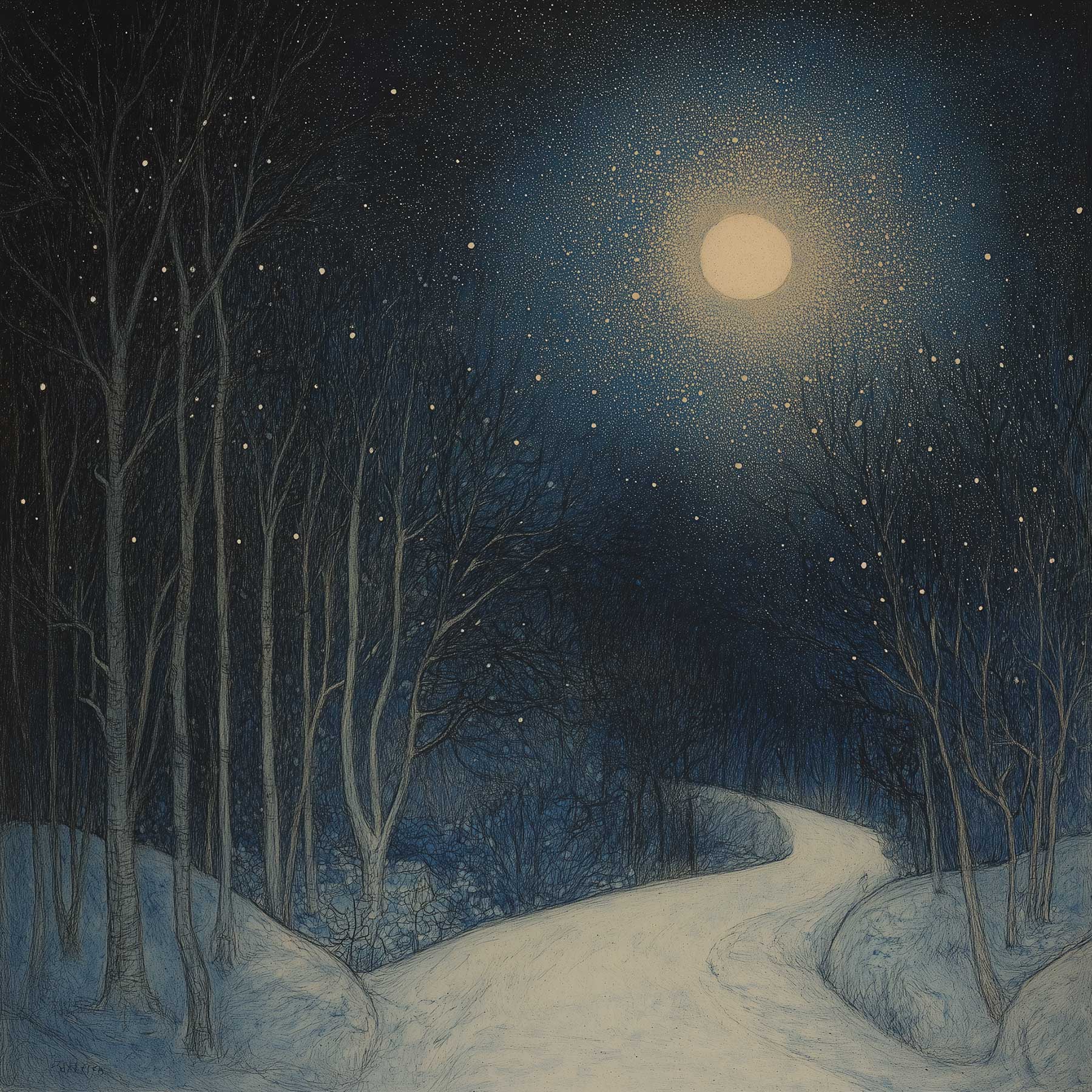
This Mixed Media Portrait Lesson explores working with both your non-dominant hand and dominant hand, using a combination of media to create your emotive sketch, creating your underpainting with a focus on values and bringing your portrait to completion. It is a fun and approachable lesson for all levels of experience!
I loved creating this painting and The message behind the project is the concept of celebrating the beautiful embrace of the night time sky, sparkling with starts and to cherish the stillness that night brings. It is the perfect time to go within and center our hearts. I encourage you to be intuitive with this process and allow emotions and personal symbolism to rise to the surface and infuse your work.
You can also listen to this month’s issue of the Studioworks journal. I find I love listening to books, podcasts and music while I draw, paint or go on a long walk. Enjoy.


One of my favorite things to do is to curate inspiration. From Pinterest boards to books, resources, playlists and more - I love to share anything that might facilitate learning, expansion, and sparks of curiosity! Being an artist, we naturally crave these things so here are some of this month’s picks from me to you.
For my Tarot card lovers, John Bauer has a beautiful deck.
I had so much fun curating this list. I hope you enjoy!!
Here are just a few of our fantastic classes! I highly recommend checking them out if you haven’t already. Enjoy!